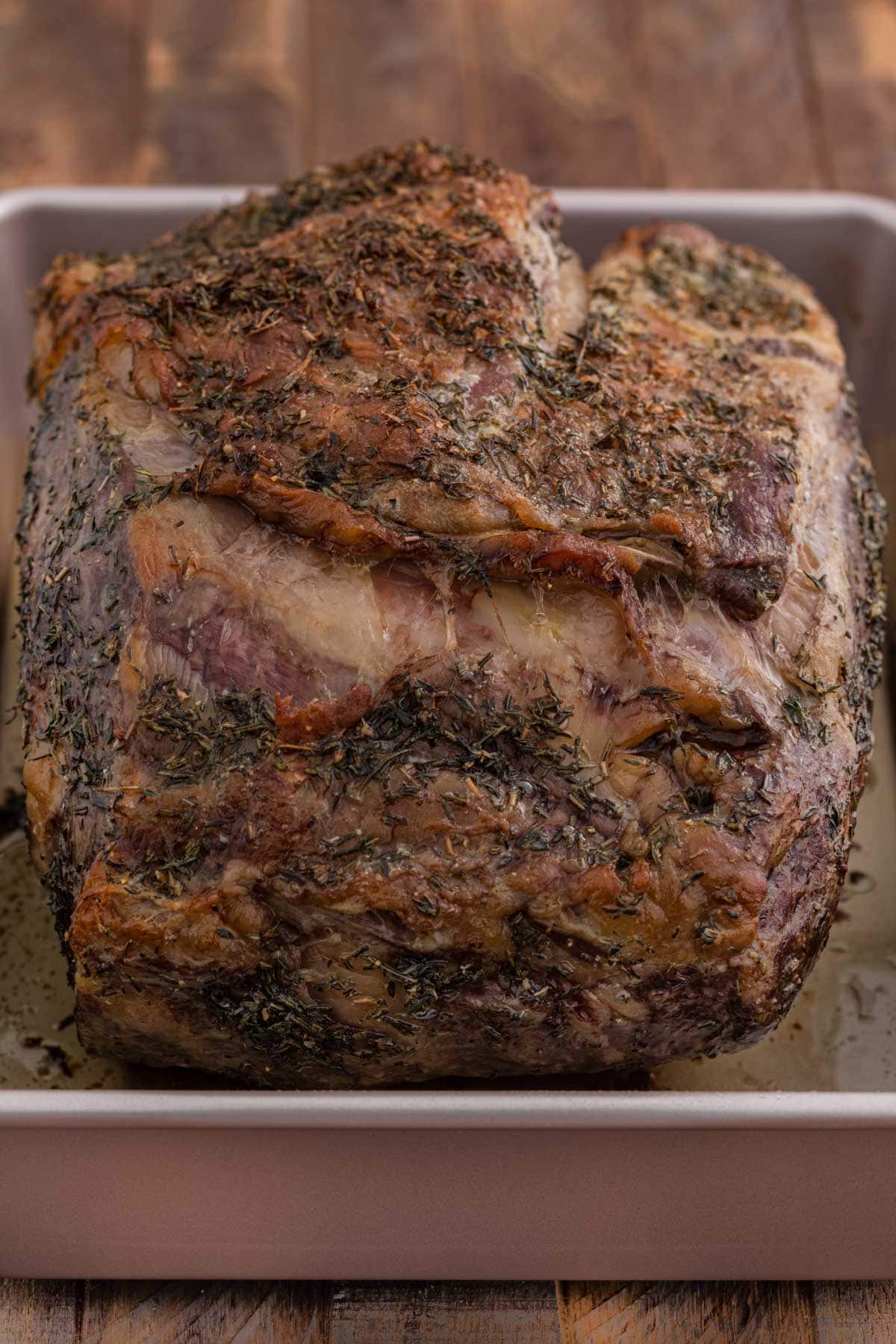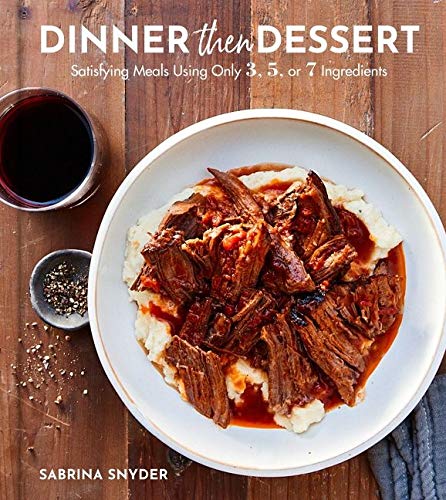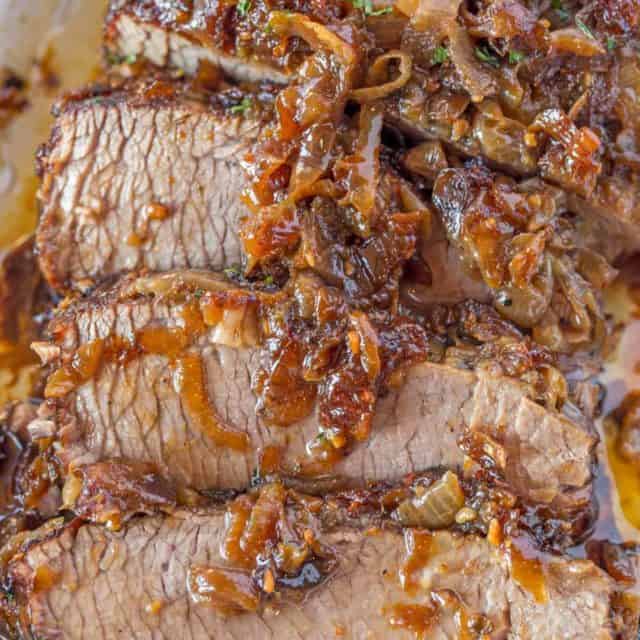Reverse Sear Prime Rib is the best prime rib recipe! Salt-aged bone-in rib roast cooked at a low temperature with a fresh herb butter rub.
A Classic Prime Rib is a holiday Main Course that takes a little prep to get a lot of flavor. Reverse Sear Prime Rib roast is one of the best prime rib roast recipes you might not have heard about. It’s an easy way to get either a bone-in or boneless Prime Rib roast juicy and tender. It takes a little planning ahead of time so it’s a great make-ahead Prime Rib recipe. Slow roast a mouthwatering Prime Rib with this easy recipe for your next special occasion!
Table of contents
- Sabrina’s Reverse Sear Prime Rib Recipe
- Ingredients
- Kitchen Tools & Equipment
- How to Make Reverse Sear Prime Rib
- Can This Be Made Ahead?
- Nutritional Facts
- What’s the cooking time for Prime Rib?
- How to Store Prime Rib
- What to Serve with Prime Rib
- Frequent Questions
- Recipe Card
- Variations on Prime Rib
- Related Recipes
Sabrina’s Reverse Sear Prime Rib Recipe
This Reverse Sear Prime Rib recipe is the king of holiday roasts! It takes a bit of work but my recipe is broken up into a few key steps so that anyone can make this extra special beef dish. Each step is important to turn a standing rib roast, aka Prime Rib, into a beautiful and tasty Christmas dinner. Plan on a full day to prepare a Reverse Sear Prime Rib so that you can take your time and get the juiciest, best prime rib ever!
What is the Reverse Sear Method?
This reverse sear method for Prime Rib Roast calls for you to slow roast the salt-aged bone-in rib roast in a hot oven and then finish on high heat to get that golden brown, crispy crust. It’s a perfect method to get medium-rare Prime Rib with little well-done meat. When you refrigerate the Prime Rib roast overnight, the salt works its way into the fat cap and makes the beef mouthwateringly tender.

Ingredients
- 10-pound Bone-in Standing Rib Roast: The star of this incredible dish, the prime-grade rib roast, is known for its tenderness and rich flavor. You can use a boneless roast if preferred, although bone-in is preferred for the best flavor. Try a USDA choice cut of ribeye roast if it’s a super special occasion!
- 2 tablespoons Kosher Salt: Kosher salt has a coarse texture, which helps season the surface of the roast evenly. If unavailable, you can use regular sea salt.
- ½ cup Unsalted Butter: Butter adds richness and flavor to the roast, while the absence of salt allows you to control the seasoning. If you prefer salted butter, reduce the amount of added salt in the recipe.
- 3 tablespoons Fresh Rosemary: Rosemary gives a fragrant, earthy flavor that goes really nicely with the richness of the beef. Fresh rosemary is recommended for its vibrant flavor, but you can use dried rosemary if necessary, using about half the amount.
- 2 tablespoons Fresh Thyme: Thyme provides a subtle, herby aroma and flavor. Fresh thyme works best, but you can substitute it with dried thyme, using half the amount.
- Coarsely Ground Black Pepper: Black pepper adds a subtle heat and depth of flavor to the roast. Coarsely ground pepper gives a nice texture and visual appeal, but you can use finely ground pepper if preferred.
Kitchen Tools & Equipment
- Roasting Pan: You’ll need a big pan to cook the prime rib in the oven. Pick one that’s strong enough and fits the size of your roast. You can use a rack inside to lift the meat and help it cook evenly.
- Meat Thermometer: This tool makes sure your prime rib is cooked just right. Stick it into the thickest part of the meat, away from bones, to check the temperature.
- Mixing Bowl: You’ll use this bowl to mix the softened butter with herbs and pepper for the rub. Pick a bowl that’s big enough for all the ingredients and easy to mix in.
- Aluminum Foil: After cooking, cover the roast with foil to let it rest. This keeps the juices inside and makes the meat tender. Just make sure to cover it loosely.
- Chef’s Knife: A sharp knife is needed for slicing the cooked prime rib. Make sure your knife is sharp for clean slices. Cut against the grain for the best results.
How to Make Reverse Sear Prime Rib
Time needed: 12 hours and 25 minutes.
- Season the Roast
Season roast generously with kosher salt. Cover it and refrigerate for at least 8 hours or overnight.

- Prepare the Roast
Take the bone-in roast out of the fridge and let it sit at room temperature for about 2 hours. Preheat your oven to 200 degrees.
- Make the Herb Butter
Mix softened unsalted butter with chopped fresh rosemary, thyme, and coarsely ground black pepper in a small bowl.

- Apply the Herb Butter
Spread the herb butter mixture evenly over the entire surface of the raw roast, ensuring it covers well. Place the roast fat side up in a roasting pan or rimmed baking sheet.

- Cook the Roast
Bake the roast in the preheated oven until the internal temperature reaches around 115 degrees for medium-rare, which should take about 3 ½ hours. You want it undercooked because it will continue to cook while it rests and later when you blacken the crust.

- Step 6: Rest the Roast
Once cooked, remove the roast from the oven and tent the entire roast with aluminum foil. Let the meat rest for about 20 minutes while the oven temp gets raised in step 7.
- Brown the Roast
Increase the oven temperature to 500 degrees. Remove the foil and return the roast to the hot oven. Bake until the exterior is well-browned, about 6 to 10 minutes. Keep an eye on your Prime Rib while it’s in the oven on high heat. You want the outer layer browned, but not blackened.

- Slice and Serve
Once browned, take the tender roast out of the oven. Slice it, discard the roast bone, and serve the succulent pieces of meat immediately for a delicious meal. Enjoy your reverse sear prime rib!

Can This Be Made Ahead?
With a longer cooking time, this recipe is designed to be made ahead! Prepare it the day before and let it marinate in the salt in the fridge overnight. The cooking process is fairly easy. Don’t forget to pull it out of the fridge at least 2 hours before cooking so it can get to room temperature. Start cooking 4-5 hours before being served.
Nutritional Facts
What’s the cooking time for Prime Rib?
– For a medium-rare prime rib roast, target an internal temperature of 115 degrees for medium-rare, which should take about 3-3.5 hours. (Carryover cooking temperature should raise internal temp to about 145 degres while resting)
– For a well-done prime rib roast, achieve an internal temperature of 145-150 degrees with a cook time of roughly 22-25 minutes per pound (roughly 4-4.5 hours).
These times and temperatures are general guidelines; it’s crucial to use a meat thermometer to ensure accuracy and adjust according to your desired level of doneness as the size, cut, oven type, etc. will be different.
How to Store Prime Rib
Storing
After the Prime Rib roast is cooked, you don’t want to keep it at room temperature for more than 2 hours. Store Reverse Sear Prime Rib in the refrigerator for up to 4 days in an airtight container.
Reheating Tips
For reheating, you can use a regular oven or an air fryer. Preheat the oven to a low temperature, around 250 degrees, and warm the roast until heated through. Alternatively, in the air fryer, set it to a low temperature, around 250 degrees, and reheat the roast until warmed to your liking.
Freezing
Cook Prime Rib completely and place in an airtight container. Freeze for up to 3 months. Any longer and you’ll risk freezer burn.
What to Serve with Prime Rib
- Side Dishes: Mashed Potatoes, Baked Potatoes, Sauteed Green Beans, Creamed Spinach are all classic sides to serve with Prime Rib, especially for Easter or Christmas Dinner!
- Horseradish: If you like horseradish on your Prime Rib, try my Creamy Horseradish!
- Au Jus From Drippings: If you want to make an au jus from the drippings, remove some pan juices before raising the oven to high heat. The high heat in the searing process may dry up all the drippings. My Classic Prime Rib post has an easy Au Jus recipe!
Frequent Questions
Use a meat thermometer, preferably an instant-read thermometer, to check if your Prime Rib Roast is cooked. Once the internal temperature reaches 145 degrees the rib roast is safe to eat.
Simply put, you don’t want your Prime Rib to overcook. Allowing it to come to room temperature ensures the internal temperature doesn’t increase while you are reverse searing the crust. This is a good time to remove the pan juices for au jus.
Recipe Card


Ingredients
- 10 pound bone-in standing rib roast
- 2 tablespoons kosher salt
- 1/2 cup unsalted butter , softened
- 3 tablespoons fresh rosemary , chopped
- 2 tablespoons fresh thyme , chopped
- coarsly ground black pepper , to taste
Instructions
- Season roast generously with kosher salt. Cover loosely with plastic wrap and refrigerate, 8 hours to overnight.
- Remove roast from refrigerator and allow to come to room temperature, about 2 hours.
- Preheat oven to 200 degrees.
- Mix butter, rosemary, thyme, and black pepper together in a small bowl; spread butter mixture over roast. Place roast fat side up in a large roasting pan.
- Bake roast in the preheated oven until internal temperature reaches 115 degrees, for medium-rare, about 3 ½ hours.
- Remove from oven and tent with aluminum foil; allow to rest, about 20 minutes. Note: Internal temperature will rise during this time.
- Increase oven temperature to 500 degrees. Uncover roast.
- Return roast to the oven and bake until well-browned, 6 to 10 minutes. Slice and serve.
Notes
- Click on the yield amount to slide and change the number of servings and the recipe will automatically update!
- Click on times in the instructions to start a kitchen timer while cooking.
- To convert measurements to grams, click on the Metric option next to Ingredients in the recipe card.
Nutrition
Variations on Prime Rib
- Garlic: If you like tons of garlicky flavor in your Prime Rib crust, add 2-3 minced garlic cloves to your herb butter rub.
- Seasonings: Use your favorite spice blends or dry grilling rubs instead of the fresh thyme and rosemary. Try a BBQ rub for beef or a black pepper steak seasoning blend.
Related Recipes
Delicious Slow Roasted Beef Recipes










